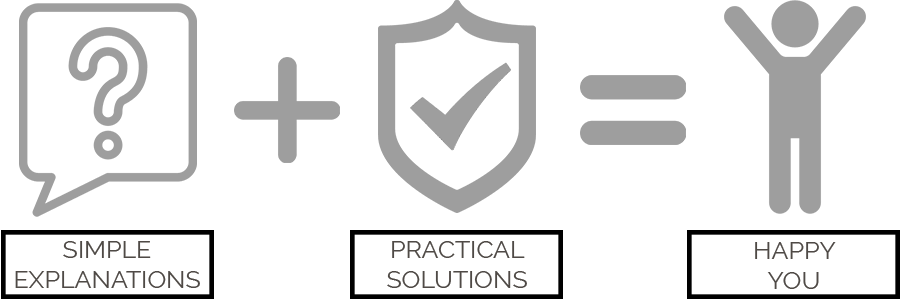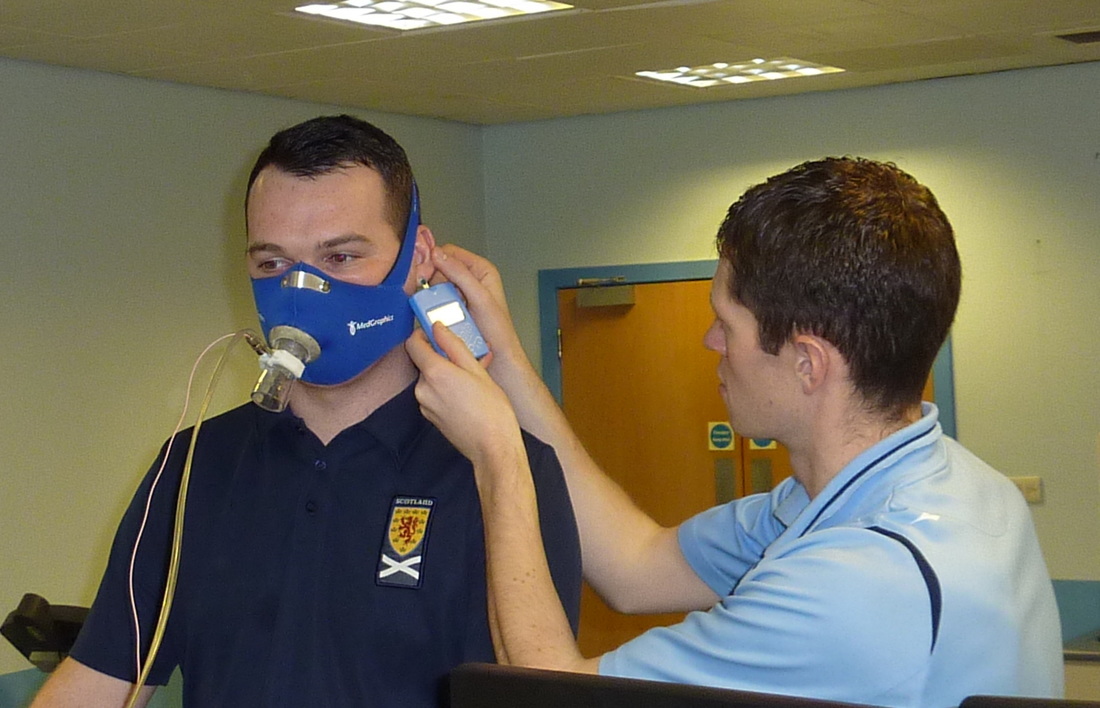|
I was thinking about what frustrates me about physiotherapy. What are the things that physios do that confuse me? If I was a patient, what would stop me coming back? What I don't like is physios that make things super complicated. I'm not sure if that helps position them as an "expert", meaning you've got to pay them because you absolutely can't help yourself. Or it may be that they don't completely understand what they're talking about so can't explain it well. But I don't like smoke and mirrors. I think physio can be pretty simple. This leads me to ask - if I boil it down, what are the most important things I do to help you recover from your injury? I think it comes down to two key components:
Usually the most important thing comes down to you doing a stretch or strengthening exercise at home. More often than not it's you consistently making small gains with a home program that makes the biggest difference to your recovery. Not anything miraculous that I can do to you here. If it's super important, why do some people do their home exercise and others don't? Life gets in the way. It's hard to remember. You've got better things to do. So, I need to make it as easy as possible for you. That's my job. That's why I'm better than just googling it. I understand that small stuff gets in the way. You remember to do the exercise when you're in the car and can't do it. Before you know it, you get to the end of the day and it's not been done. There's lots of little things that make a home exercise program hard to do "now" - meaning you leave it for "later". If you have to get on the floor you'll do it "later". If there's too many exercises to do, you'll do it "later". If you have to use equipment - it's not on hand. Any little barrier to getting it done means it doesn't get done. It needs to be easy. So my practical solution for your recovery comes back to: WHAT WOULD I REALISTICALLY DO MYSELF?. It's lucky I've had a few injuries and have learnt what's realistic and what's not. If I had your injury, what is the one thing I would actually, realistically do myself? I think that is a great question for all healthcare professionals. Because we know that around 40% of our health budget is wasted on unnecessary tests and treatments. Unnecessary healthcare expenses add up to $45 billion/year in Australia. It is amazing how many things healthcare practitioners recommend to patients that they wouldn't do themselves. I think we could save a lot of time, effort, and money if all health practitioners had a tick box to sign-off on all investigations and treatments - Would they do it themselves? So that's what I give you. Things that I would do. I understand what is practical and realistic. Simple Explanations + Practical Solutions = Happy You! Audio Transcript:What we know about back pain is that it's only 1% of back pain disorders that have really serious stuff - like it could be caused by a malignancy, a fracture, an inflammatory disorder, - and only around 5% of back pain is linked to a disc prolapse where there’s some kind of nerve compression. 90 - 95% of back pain disorders have no diagnosis based on scans. But the problem we've created is that, whereas fifty years ago people would have been called / had what they used to call lumbago, or back pain, or a back sprain, - now we've created another problem because we have highly sensitive imaging techniques like the MRI scanner which picks up so-called “abnormalities” in almost everybody, because if you scan anybody's spine, 90% have got degenerate discs, around 45% have got disc bulges or protrusions, 20-30%: protrusions or annular tears or facet joint arthrosis. So in trying to identify the 5%, we've created this massive belief in the majority of back pain patients that back pain is caused by these “findings” on scans which actually are normal findings that are not predictive of back pain.
And then what's happened is we then have this belief that back pain’s caused by these damaged structures. We start treating the spine like it is damaged. We tell people, ooh you got to protect your back, and keep it straight and watch out when you lift, strengthen your core. Which are things that we know people with pain already do.
And then we've gone down this other path saying we’ve got to inject the spine, and you know use different kinds of pharmacological approaches, and then end up with fusing the back in an attempt to treat it.
We kind of have developed this whole belief system around that back pain is all about structure. And so we've directed our treatments at treating the symptom of pain and we haven't done a very good job of it. In terms of the cause of the problem what we understand is it's a lot more complex. Back pain can be caused by a number of factors, both what we call peripheral drivers, things like abnormal muscle tension, or muscle guarding, adopting postures or movement patterns that are rigid and guarded and protective, which can create stress on pain sensitive structures.
And that interplays with other things around stress-related factors. People are in high-level of stress. People who are not sleeping. People who have suffered from depression or anxiety. We know that that can influence the amplifier effect of the brain which can sensitise the body's spinal structures.
And we’ve almost created a perfect storm because if your belief is that you've had a scan and your joints are worn out - then when we asked people what that means to them they think that their backs are crumbling or that with time the more they use them they’re going to wear them out.
They become very worried about that. They start protecting their backs and abnormally stress these pain sensitive structures, and they stop doing the things in life that give them meaning. They’re too frightened to exercise. That has huge impact on the general health and health co-morbidities.
And then we can create the catastrophe around the fact that their too frightened to do things that help them and the very things that they've been advised to do often feeds the problem that they've created.
One of our research group, Ivan Lin, published a paper just recently in the British General Medicine Open, proposing that in fact disability around back pain is iatrogenic. That is, its health care system induced. Where we hear the stories of people with pain, like we have the last few days, around the pain started with not even, not even an injury. And then they go through this cascading process of seeking different treatments, given different advice, being told your disc’s damaged, or this is worn out, or you got a pinched nerve, or you’ve got to be careful when you bend, hold your core, and be tense when you move. And then they describe this process of becoming depressed, highly anxious, fearful, start avoiding stuff, and then their life's trapped.
And so we know that if you ask people with pain they say my life is on hold because I can’t, I don't understand it, I can't control it, and I can do the things in life that give me meaning.
I think there's now a general belief that in fact persistent back pain is something that we can't change. And that the best thing we can do is to really advise people to make the most their lives. To accept their situation and, and you know, go back to doing things that give their life value so that they’re less disabled. Now I think that may be the fact for a very small group of people but I think we miss a whole lot of people who have huge opportunity to change. And I think that's a view that needs to shift among health professionals. That we stop thinking of backs as back’s been damaged. That pain does not equal structural injury. That movement is good for the body. That backs should be trusted to move in a normal way to give people strategies and confidence - help both healthcare professionals and physiotherapists and other healthcare professionals to give them a different view on pain. To stop describing backs as being caused by wear and tear, and disc degeneration, and disc bulges. To tell people that these findings are normal. And then to build the capacity within themselves, in terms of understanding their pain, in the context of their life, to find ways to break that pain cycle. And we've seen examples of this, and as we have across a number of years, and we put these up on our Pain-Ed website, which is a free open-access website that we’re committed to try and change the story around pain. To make people think of it as something that is modifiable. That there are ways in which people can take control of their life, to get their life back.
Research Summary: Saw AE, et al. Br J Sports Med 2015;0:1–13. doi:10.1136/bjsports-2015-094758
Monitoring athletes' response to training is crucial for improving performance and avoiding injury. Elite level sport utilises an increasing number of ways to measure athlete well-being. Batteries of tests are packaged into commercial products attracting premium fees. This is justifiable if you are Sydney Swans or Liverpool FC, but where does that leave the rest of us? Are we missing out if we're not testing cortisol levels to know if we are over-training? A recent paper carried out a systematic review where objective measure, such as:
The researchers concluded that the:
|
�
Archives
July 2024
Categories
All
|
|
|
MENU
|
INJURY INFO
|
INJURY INFO
PHYSIO MOSMAN |
Copyright© 2024| Fit As A Physio | ABN 62855169241 | All rights reserved | Sitemap



 RSS Feed
RSS Feed



